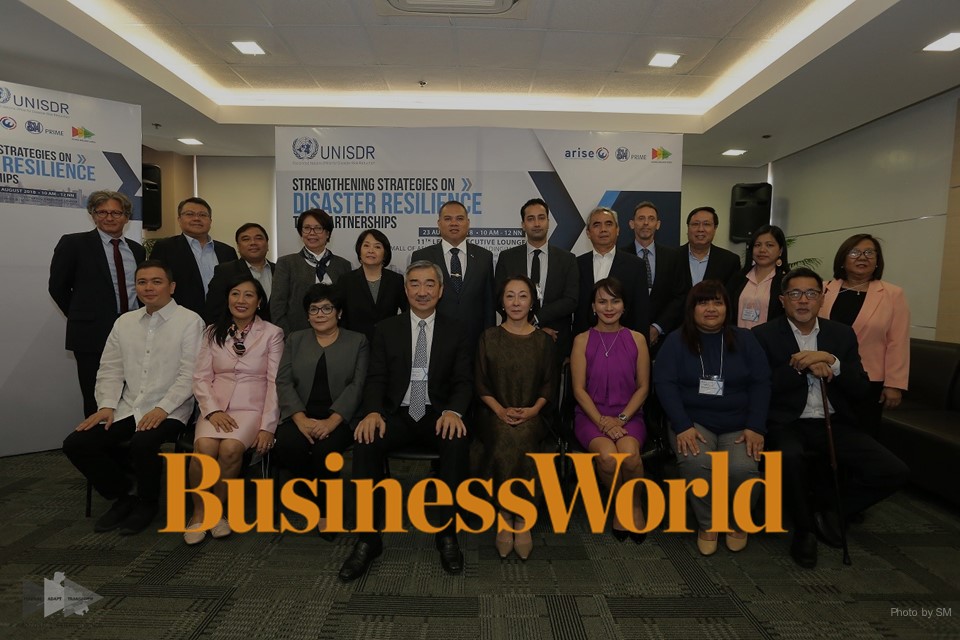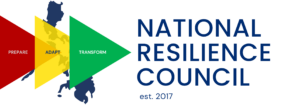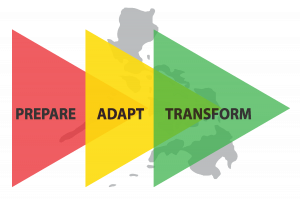In the News
Recent News

A stronger partnership for a disaster-resilient country
Due to the Philippines’ geographic position, it is considered one of the most hazard-prone countries. Natural catastrophes such as typhoons, floods, volcanic eruptions and earthquakes are a national issue, threatening the lives of its citizens and hampering the its progress.
Economic losses from these disasters are now reaching an average of $250 billion to $300 billion a year, according to the 2015 Global Assessment Report on Disaster Risk Reduction, prepared by the United Nations Office for Disaster Risk Reduction (UNISDR). This will likely continue – and presumably get even worse – in the years ahead if no intervention is made by the government and the private sector.
In the past years, attempts to address the impact of natural calamities on the Philippines have been made. The national government and the private sector are working side by side in implementing disaster risk reduction planning and activities to make the country more resilient to national disasters.
One synergistic public-private partnership (PPP) was formed between Alliance for Disaster Resilient Societies (ARISE) and Philippines and the National Resilience Council (NRC), which are both led by Hans T. Sy, chairman of the executive committee of SM Prime Holdings, Inc.
ARISE Philippines is a UNISDR-led network of private sector entities whose members share information, experiences, activities and projects with the public sector and other stakeholders to create risk-resilient societies.
NRC, on the other hand, is a science and technology-based PPP that enhances the capacities of local government units (LGUs) to understand risk and prevent or reduce impacts of disasters and ensure development continuity.
Recently, the United Nations lauded the Philippines for its crucial role in disaster risk reduction. During a meeting with members of ARISE Philippines held at the SM Mall of Asia Complex in Pasay City, Mami Mizutori, the new Special Representative of the Secretary-General for Disaster Risk Reduction, commended the efforts of the national government and the private sector in making the Philippines one of the most disaster-resilient countries.
“I have been wanting to come to the Philippines because of the importance of what your country is doing promoting disaster risk reduction not only here and in the region but also globally. You are one of the most advanced countries in terms of preventing disaster risks from affecting you tremendously,” Ms. Mizutori said.
She shared that the SM Prime-led efforts of the business community toward disaster risk reduction in the country is a success.
“Indeed, ARISE Philippines is one of the most vibrant national ARISE networks in the world and I must mention the personal leadership of Mr. (Sy) in making this possible,” Ms. Mizutori said.
More important, she added that ARISE Philippines and NRC are a “shining example of PPP hailed as a good practice and deserve to be replicated in other countries.”
For his part, Mr. Sy said that SM Prime will continue to make disaster risk and reduction management the core of its operations, a pursuit he has adopted even before disaster resilience became a national policy.
“SM Prime as a responsible property developer places DRR (disaster risk reduction) as one of its core strategies. We have to protect our business and property and ensure the safety of our tenants, customers and employees. Today, disasters have become more frequent and severe. We have to do our share with the government and the private sector to work together to find solution towards building greater resiliency that ever before,” Mr. Sy said.
Aside from making disaster risk reduction and management the heart of every business operation, bringing it to the local level is a significant move to help the country build a resilient future. In this regard, NRC has launched the Disaster Resilience Scorecard for LGUs.
The scorecard aims to assist in monitoring and reviewing progress of each LGU in the implementation of disaster risk reduction and management to achieve development continuity.
According to NRC President Ma. Antonia Yulo-Loyzaga, the scorecard will provide a set of assessments based on five pillars – effective leadership and governance, resilient human development system, sustainable local economy, resilient infrastructure and environmental sustainability.
“The Resilience Scorecard 1.0 presents a set of localized metrics for the use of internal and external stakeholders of local government units. It is to be used in combination with a Three-year Resilience Leadership program. While it was intensively vetted by a combination of over 600 individuals from national government agencies, LGUs, the private sector and academe, it is a live document and will continue to be refined as we do a deep dive into the risk profiles of each local government partner,” Ms. Yulo-Loyzaga explained.
Meanwhile, the use of science and technology as a tool for building resilience is becoming more important to understand the processes before, during and after disasters and reduce losses of lives and properties.
Ms. Mizutori believes that because of the country’s advancement in the field of disaster resilience, it is in the best position to introduce innovations that will allow communities to adapt and transform their way of life.
“The Philippines has a unique and important role to lead the way to science and technology-based public-private partnerships in order to adopt a culture of disaster prevention. (It) can drive innovative ways to build adaptive and transformative capacity even among the marginalized,” she said.
SOURCE:
SM Supermalls. (2018, October 12). A stronger partnership for a disaster-resilient country. pressreader.com. Retrieved from https://www.pressreader.com/philippines/business-world/20181012/281535111948647
Recent News

PREPARE. ADAPT. TRANSFORM.
National Resilience Council
MOA Square, Seashell Lane cor.
Coral Way, Mall of Asia Complex, Brgy. 76
Zone 10, CBP 1A, 1300, Pasay City
Metro Manila, Philippines
Copyright ©️ 2024. National Resilience Council. All Rights Reserved.

